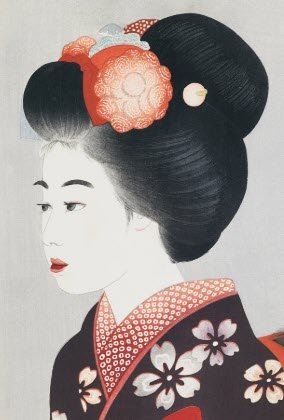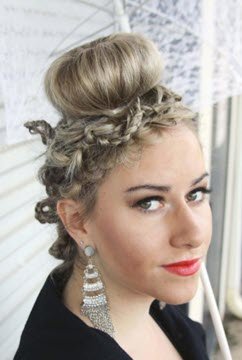Hairdressing Practices Around The World
The world of hairdressing is a dynamic tapestry woven from diverse cultural influences, historical contexts, and evolving trends. As we delve into the multifaceted practices of hairdressing across various cultures, it becomes evident that hair is more than just a physical attribute; it is a profound expression of identity, tradition, and social status. This article explores the evolution of hairdressing practices globally, highlighting how cultural nuances shape our understanding and appreciation of hair.
The Cultural Significance of Hair
Hair serves as a powerful symbol of personal and cultural identity. Across different societies, hairstyles can indicate social status, ethnic background, and even religious beliefs. For instance, in many Indigenous cultures, long hair is regarded as a sacred connection to one’s heritage and spirituality. Similarly, in the African American community, natural hairstyles like afros and dreadlocks have become emblematic of cultural pride and resistance against Eurocentric beauty standards.
Traditional Practices
Many cultures have developed unique hair care rituals that carry deep-rooted significance. In India, for example, hair oiling is a cherished tradition passed down through generations. Mothers often massage their daughters’ hair with natural oils, infusing the practice with stories and cultural teachings. This ritual not only nourishes the hair but also strengthens familial bonds.
In contrast, the Himba tribe of Namibia uses a mixture called otjize, made from animal fat and ochre, to protect their hair from the sun while simultaneously enhancing its appearance. Such practices highlight the diverse ways in which hair care is intertwined with cultural identity and environmental adaptation.
Historical Influences on Hairdressing
Ancient Civilisations
The origins of hairdressing can be traced back to ancient civilisations, where hairstyles were often elaborate and laden with meaning. In ancient Egypt, hairdressers were esteemed artisans who crafted intricate styles for both the elite and common folk. Wigs made from human hair, along with adornments like gold and jewels, were popular among royalty, showcasing their wealth and status.
Throughout history, the influence of royalty on hairdressing trends cannot be understated. Monarchs and aristocrats have set the standard for fashion, with their extravagant hairstyles often trickling down to the masses. The Renaissance era, for example, saw the rise of elaborate wigs and intricate hairstyles that symbolised power and sophistication. As fashion evolved, so too did the techniques and tools used in hairdressing.
The Modernisation of Hairdressing
Technological Advancements
The advent of modern technology has revolutionised the hairdressing industry. Today, stylists have access to a plethora of sophisticated tools such as ionic hairdryers, ceramic straighteners, and professional-grade clippers, making it easier to achieve salon-quality results at home. Additionally, hair analysis apps and virtual styling software allow clients to experiment with different looks before committing to a drastic change.
Social Media Influence
The rise of social media platforms like Instagram and TikTok has transformed how hairdressing trends are disseminated and adopted. Influencers and hairstylists can showcase their work to a global audience, setting trends that can go viral overnight. This democratization of beauty has led to a more diverse representation of hairstyles, allowing individuals from various backgrounds to embrace their unique hair textures and styles.
Global Hairdressing Practices
Hairdressing in Africa
In many African cultures, hair is not only an aesthetic feature but also a vital aspect of cultural identity. Traditional hairstyles often carry significant meanings, indicating age, marital status, and community affiliation. For example, the Maasai people of Kenya and Tanzania wear elaborate braids and adornments that signify their cultural heritage and social standing.
In Asia, hairdressing practices vary widely, reflecting the continent’s rich cultural diversity. In India, the tradition of hair oiling is deeply rooted in Ayurvedic practices, promoting hair health and wellness. Meanwhile, in Japan, traditional hairstyles like the shimada are often worn by brides during Shinto ceremonies, symbolising purity and elegance.
Hair as a Political Statement
The Natural Hair Movement
The natural hair movement in the African American community has emerged as a powerful form of political expression. Following the civil rights movement, individuals began to embrace their natural hair textures as a rejection of societal pressures to conform to Eurocentric beauty standards. Iconic figures like Angela Davis popularised the afro as a symbol of black pride and empowerment, challenging the status quo and promoting self-acceptance.
The punk movement of the late 20th century also utilised hairstyles as a form of rebellion against mainstream culture. Mohawks, brightly coloured hair, and extreme styles became synonymous with non-conformity and a rejection of societal norms. These hairstyles served as visual statements of dissent, allowing individuals to express their identities in bold and provocative ways.
Contemporary Trends in Hairdressing
Sustainability in Hair Care
As environmental consciousness grows, so does the demand for sustainable hair care practices. Many salons are adopting eco-friendly approaches, utilising organic products and implementing waste reduction measures. This shift not only benefits the planet but also appeals to consumers who prioritise ethical choices in their beauty routines.
Inclusivity and Diversity
The beauty industry is increasingly recognising the importance of inclusivity. Hairdressers are now trained to cater to diverse hair types and textures, breaking down traditional beauty standards that have historically marginalised certain groups. This emphasis on diversity fosters a more welcoming environment for all individuals, encouraging them to embrace their unique hair.
The Future of Hairdressing
Personalisation Through Technology
The integration of artificial intelligence in the hairdressing industry is paving the way for personalised services. From AI-driven colour matching to tailored hair care recommendations, technology is enabling stylists to offer highly customised experiences. This innovation not only enhances client satisfaction but also allows stylists to deliver more precise results.
Remote Consultations
The COVID-19 pandemic has accelerated the adoption of remote consultations in the hairdressing sector. Stylists now offer virtual consultations and tutorials, allowing clients to maintain their hair from the comfort of their homes. This shift has expanded the reach of hairdressers, enabling them to connect with clients beyond geographical limitations.
Hairdressing as an Art Form
Hairdressing is undeniably an art form that allows for creative expression. Stylists utilise various techniques, colours, and styles to create unique looks that reflect their clients’ personalities and preferences. This artistic aspect of hairdressing not only enhances individual beauty but also contributes to the overall cultural landscape.
Celebrating Cultural Heritage
Many hairstylists draw inspiration from their cultural backgrounds, incorporating traditional techniques and styles into their work. This celebration of cultural heritage not only enriches the hairdressing industry but also fosters greater appreciation for diverse beauty standards.
Conclusion
The evolution of hairdressing practices around the world illustrates the profound connection between hair, culture, and identity. From ancient traditions to modern innovations, hair continues to serve as a canvas for self-expression and cultural pride. As we navigate the ever-changing landscape of hairdressing, it is essential to honour the diverse practices and meanings associated with this art form. By embracing inclusivity and sustainability, the hairdressing industry can continue to thrive and evolve, reflecting the rich tapestry of human experience.




